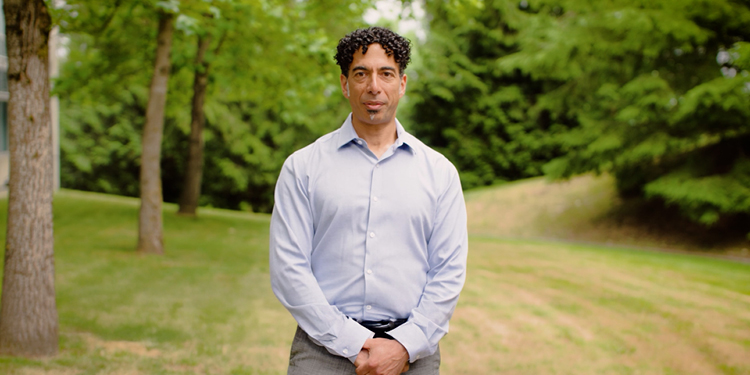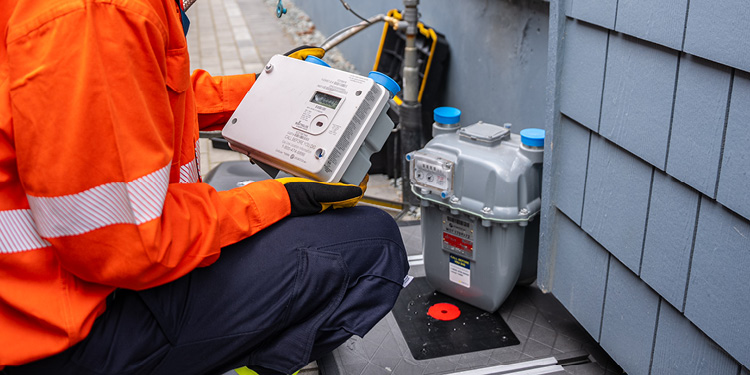Protecting White sturgeon: a 175-million-year-old species at risk
January 13, 2021
Imagine a creature that’s been around since the dinosaurs—and yes, one actually exists. White sturgeon have swum in BC waters for 175 million years but in 2006 the federal government officially listed four populations of White sturgeon as endangered under the Species at Risk Act. These populations are close to home and located in the Nechako River, Upper Fraser River, Upper Columbia River and Kootenay River. Although the species is endangered, there have been recent efforts to help improve their chances of survival.
FortisBC owns and operates four hydroelectric generating plants on the Kootenay River and we have a responsibility to understand how our operations affect the wildlife around us. We caught up with our aquatics biologist, James Baxter, who had a chance to get up close with White sturgeon on Kootenay Lake in an effort to learn more about the species and better understand how we can protect them.
Hi James—tell us a little about yourself and the work you do.
I’ve worked for more than 25 years in the fisheries industry and I’ve always had a passion for being on the water. In university, I was interested in taking classes in lake and stream ecology and fisheries biology. I finished my undergrad and then I completed my masters at The University of British Columbia in fisheries biology. I’ve previously worked for BC Hydro and have done private consulting work, so my experience has spanned over many different projects in fisheries biology and aquatic impacts of industry.
I started at FortisBC in February of 2020 and specialize in the aquatics field around our hydroelectric generation plants. Day to day, I deal with the aquatic impacts of our operations. This is both in the electric and natural gas sides of the business. Specific projects I focus on are related to the recovery of White sturgeon and managing shore-spawning kokanee salmon.
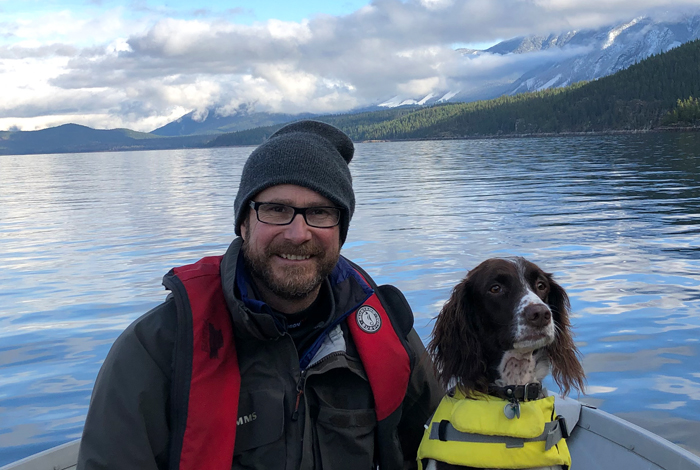
James has years of experience in the aquatics field, specifically with White sturgeon, and we’re excited to have him on the FortisBC team.
What are White sturgeon?
White sturgeon are quite a unique species. They are the largest, longest-lived freshwater fish species in Canada, and according to fossil records, White sturgeon have changed very little over their millions of years of evolution. Some actually call them ‘living fossils’ and the species continues to exist today as bottom feeders in lakes and rivers. Its broad, flattened head and toothless mouth that extends out of its body is well adapted to feed on food beneath it. This long-lived species has survived through ice ages, climate changes and human impacts but their existence continues to be at risk.
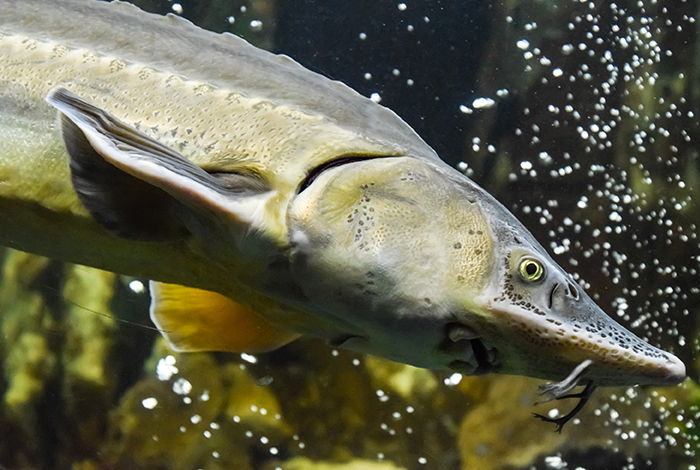
Did you know this species can reach six metres in length, 1,400 pounds in weight and more than 100 years in age?
Why is it important to protect this species?
White sturgeon is listed as an endangered species by the federal and provincial governments meaning there are national and local efforts to protect this species. The endangered Kootenay population has approximately 1,700 wild adults remaining and ranges from the Corra Linn Dam throughout Kootenay Lake and Kootenay River.
The low numbers of wild White sturgeon suggest that the species is not successfully reproducing or the younger generation of fish are not surviving. A unique attribute to White sturgeon is the very late age at which they reproduce. The spawning age for males is 15 years and more than 20 years for females. Although male White sturgeon can spawn throughout their life, females only spawn every four to 10 years.
It’s necessary to protect and aid the development of young White sturgeon so they can reach the age to reproduce and keep their species from extinction.
How is FortisBC involved with the protection of White sturgeon?
We own and operate four hydroelectric generating plants in the area and we also hold the water license for Kootenay Lake, so it’s important for us to understand how our operations affect the aquatic environment and wildlife around us. FortisBC joined the Kootenai River White sturgeon annual program review group to help with the recovery of White sturgeon in Kootenay Lake. Recovery is the process of reversing the decline of an endangered species to help improve its ability to survive in the wild.1 Joining this team gives us the opportunity to work with the other members and be part of the collective effort to protect this age-old species.
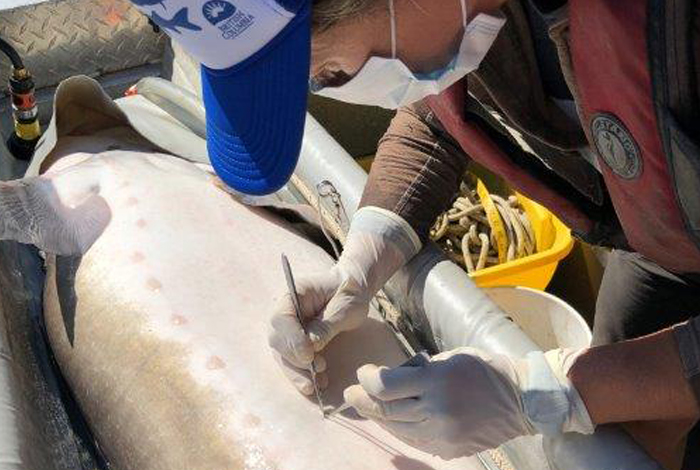
Sarah Stephenson, a rare and endangered fish biologist for the BC government, is preparing to insert a sonic tag into this White sturgeon that will allow its movements to be monitored in Kootenay Lake.
What is FortisBC doing to protect the White sturgeon?
We know there’s a need to better understand and examine White sturgeon in the West Arm of Kootenay Lake. So earlier this year, we partnered with The BC Ministry of Forests, Lands, Natural Resource Operations and Rural Development (BC MFLNRORD) in Nelson to assist with their studies of White sturgeon in the area.
Having the chance to go out on the water to work with the staff from the Ministry was a great learning experience. In total, we caught 24 White sturgeon, both wild adults and hatchery juveniles, with some of them being more than six feet long. We collected biological data from each one so we can learn more about their characteristics, and then we released them back into the water.
Sampling this population in the West Arm was long overdue and by working with the Ministry to do this work, we’re able to expand our understanding of White sturgeon habitats in Kootenay Lake so we can help take the necessary steps to protect them.
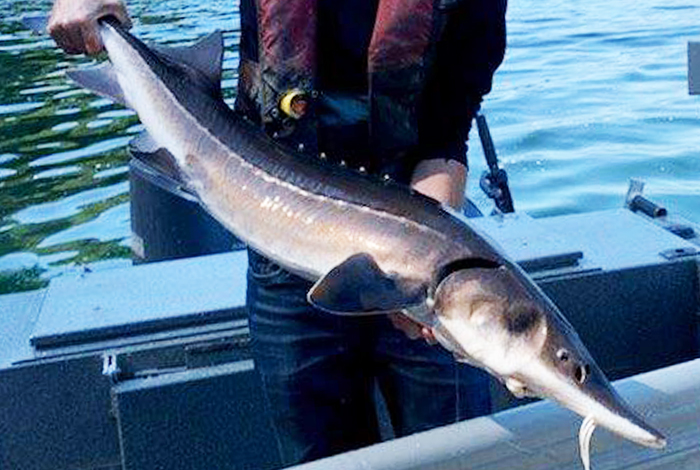
James is holding a White sturgeon that was caught and sampled by the team so we can learn more about this species.
What are the other efforts being made to learn more about White sturgeon in Kootenay Lake?
FortisBC also helped fund the purchase of sonic tags that were implanted into White sturgeon as well as an additional receiver to track any movements further down the West Arm. Receivers were placed along the Kootenay west of Nelson so that movement of the fish could be better tracked. The receiver will add to the existing array of over 90 receivers in BC, Idaho and Montana. Each tag is uniquely coded for each individual fish so we can track their location. We can use the tags to track the sturgeon in the West Arm of Kootenay Lake, the Kootenay River downstream of Nelson, and the main body of Kootenay Lake.
This will help us understand how our operations influence the movement patterns of White sturgeon so we can make informed decisions on how to help them in their recovery.
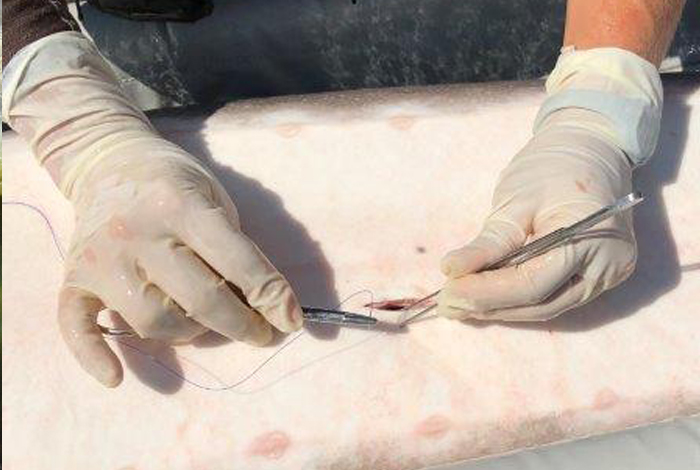
Once the biological sample is taken, the incision is stitched up and then we release the White sturgeon back into the lake.
So what’s next?
When it comes to work around White sturgeon, there is still more to be done to help in the recovery of this species. Because the Kootenay River crosses the Canadian-American boarder, we’re working with the Kootenai Tribe of Idaho and the US Geological Survey as well as the Lower Kootenay Band and BC MFLNRORD to conduct critical habitat mapping of White sturgeon through these areas.
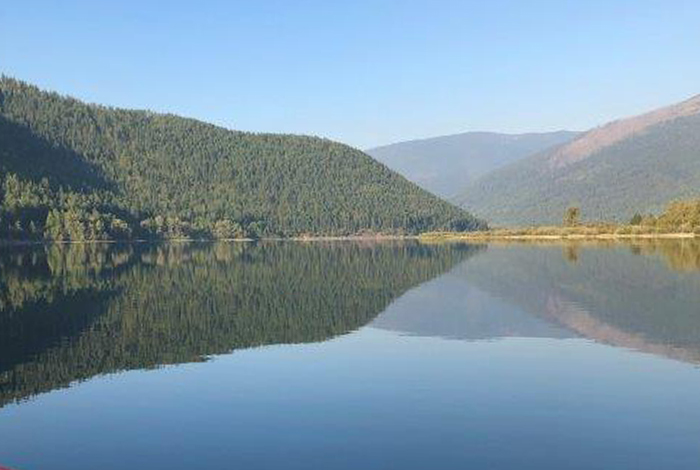
By working together, we can continue the recovery of White sturgeon and increase their population in Kootenay Lake, shown here.
It will be important to continue working with our partners throughout this process so we can understand how to aid in the recovery of White sturgeon and adjust our operations if necessary. Protecting the environment is a priority for us, and ensuring the wildlife surrounding our operations continues to thrive is important in the preservation of local species.
Learn more about how sustainability is integrated into our business practices and the ways we are protecting the environment.

